A pioneering initiative saw the release of roughly sixty dung beetles in the Landes De Gascogne (Gascony Moors), France, this week. The release, supported by the European Wildlife Comeback Fund, supports restoring crucial natural processes in the soil.
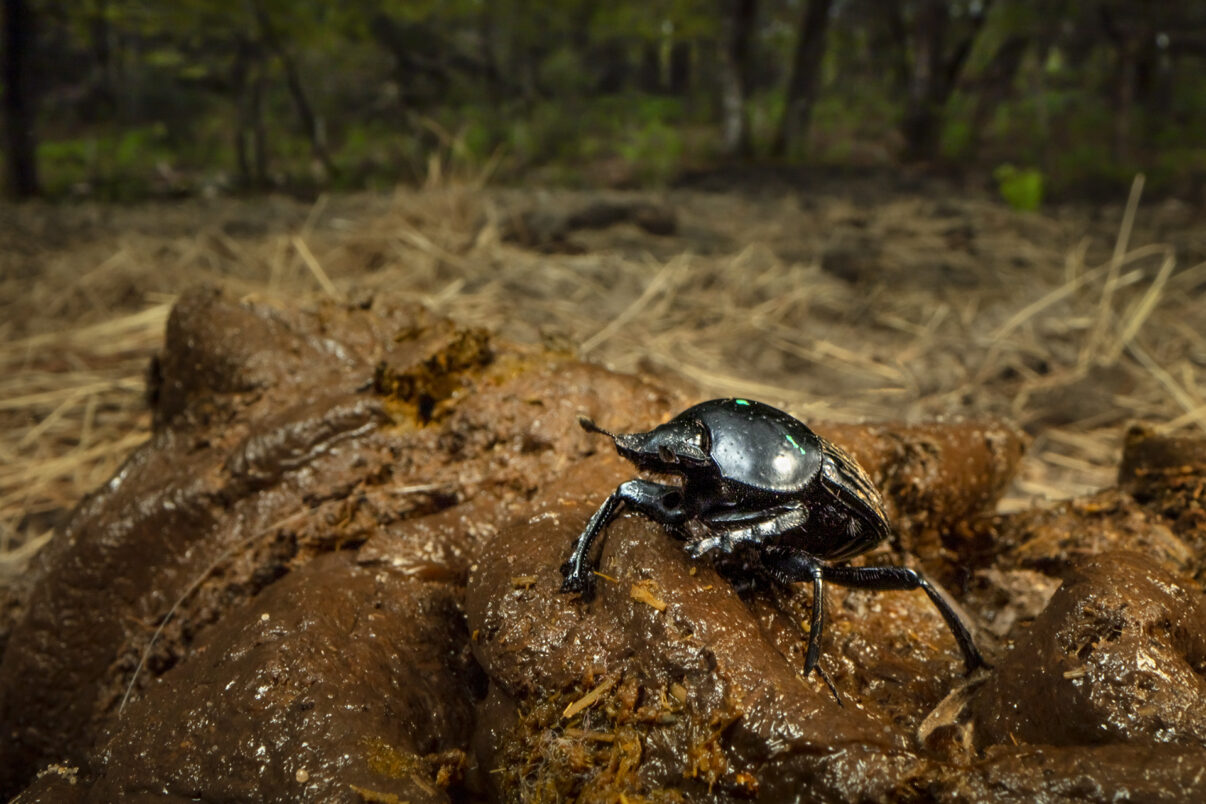
First of its kind
Last week, around sixty dung beetles – Scarabaeus laticollis – were released into the southwest of France to boost the rewilding mission of “Cousseau, dunes and wetlands”. This initiative is a member of the European Rewilding Network, and led by Society for the Study, Protection and Development of Nature in the South West (SEPANSO).
The release took place in a carefully selected open dune meadow located in the nature reserve ‘Etang de Cousseau’, and was supported by the European Wildlife Comeback Fund. This release is the first of its kind in France.
The beetles were collected north of Montpellier in Southern France, transported in terrariums filled with sand, gravel, and cow dung and covered with mosquito nets. Prior to release, hay was scattered around on the ground to attract semi-wild Marine Landaise cattle into the meadow, providing a fresh layer of dung to welcome the new arrivals.
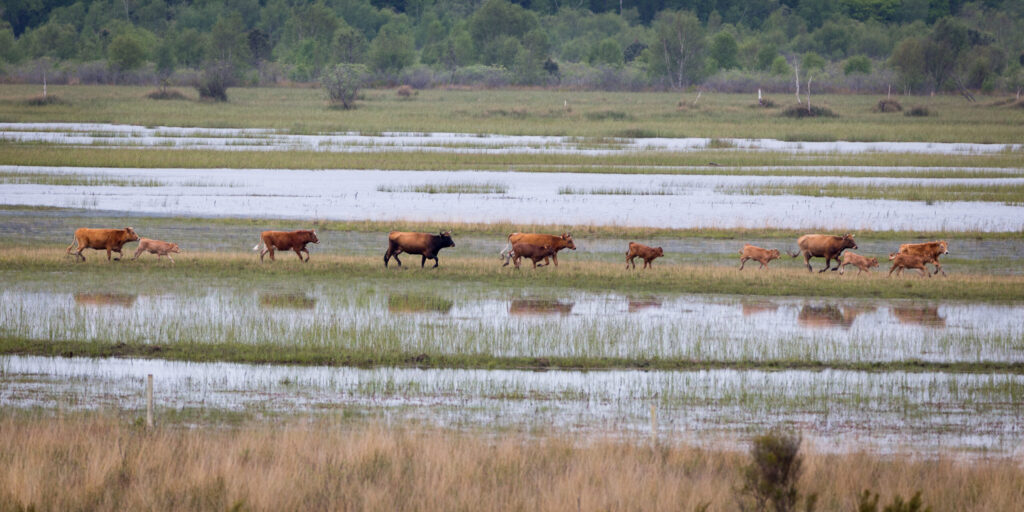
Transforming soils
The dung beetles will play a unique role in the health of the ecosystem. They roll dung into balls, and transport these balls into underground chambers where they are fed upon and given to larvae. “In doing so, these dung beetles transform soils in amazing ways,” explains Rewilding Europe’s Rewilding Manager, Sophie Monsarrat. “While the cattle drive nutrient processes above ground, this species of dung beetle disperses organic matter and brings it below ground, creating rich soils that benefit plants and other animals.”
Dung beetles also help prevent nutrient run-off into waterways and are an important food source for predators such as birds, small mammals, amphibians, and reptiles. Small metallic shelters were placed in the meadow to prevent over-predation during the initial establishment phase, allowing the beetles to find protection and exit when they feel safe.
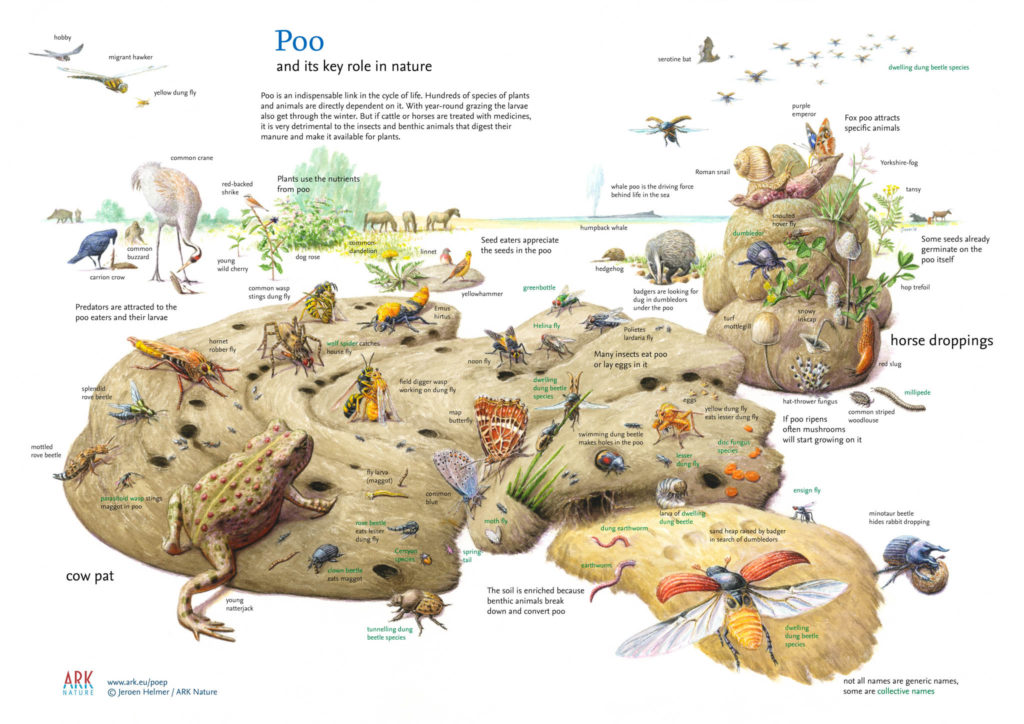
Measuring dispersal
To measure success, a protocol is in place to monitor the dung beetles over the next three years. After being captured, each dung beetle was painted with a color-coded marker on the thorax, allowing the experts to track the beetles and monitor how the population grows and if it starts colonizing other nearby areas.
This specific species of dung beetles have wings and some might fly off soon after being released. According to Francois Sargos, SEPANSO’s conservation manager at the Etang de Cousseau Nature Reserve, this is a good thing: “While there is no objective in terms of population size, the main objective is to have dispersions to other sites up to ten to fifteen kilometres away. We will be thrilled if they can recolonize along the coastline.” To boost chances of establishing a population, another sixty beetles are scheduled to be released next year.
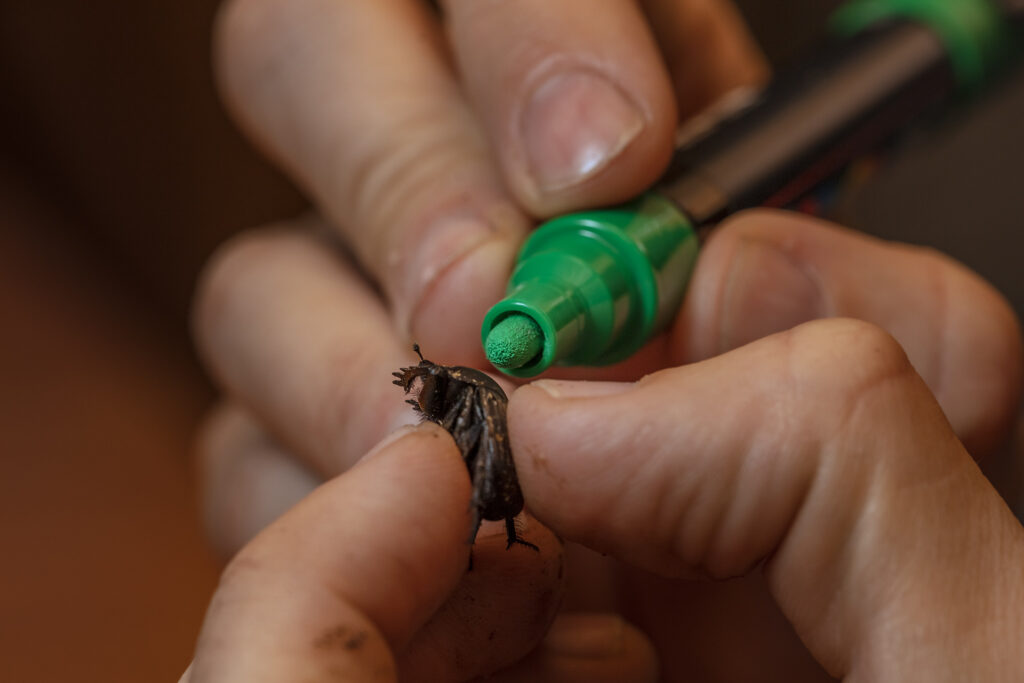
A coevolved relationship
Although once commonplace, this species of dung beetles have not been seen in the region since 1965, as Sargos recounts — around the same time the last feral Marines Landaises cattle herds stopped roaming freely. The Marine Landaise is a cattle breed uniquely adapted to the wetlands of Landes De Gascogne, which began disappearing when maritime pine forest plantations and intensive farming began dominating the region.
In total, there are around 300 individuals of the Marine-Landaise breed spread over the coast of southwestern France. With help from WWF, the Cousseau Nature Reserve purchased the last known remaining herd in 1988 after the owner passed away. They are managed according to rewilding principles. Their grazing actions help to create a patchwork of wet woodlands, bogs and marshes that enhance and restore wild nature across the reserve.
The newly introduced dung beetles will accompany the cattle in these restorative actions — a relationship that has a deep evolutionary history. Dung beetles coevolved with large herbivores and omnivores, and can be found on every continent except Antarctica. Wherever animals have been grazing, browsing, and defecating in large quantities, dung beetles have been driving dung into burrows and filling a unique ecological role.
With the loss of natural grazers in open landscapes, dung beetle populations have declined in parts of Europe. With the recent comeback of large herbivores in Europe, bringing back this companion species is the logical next step.
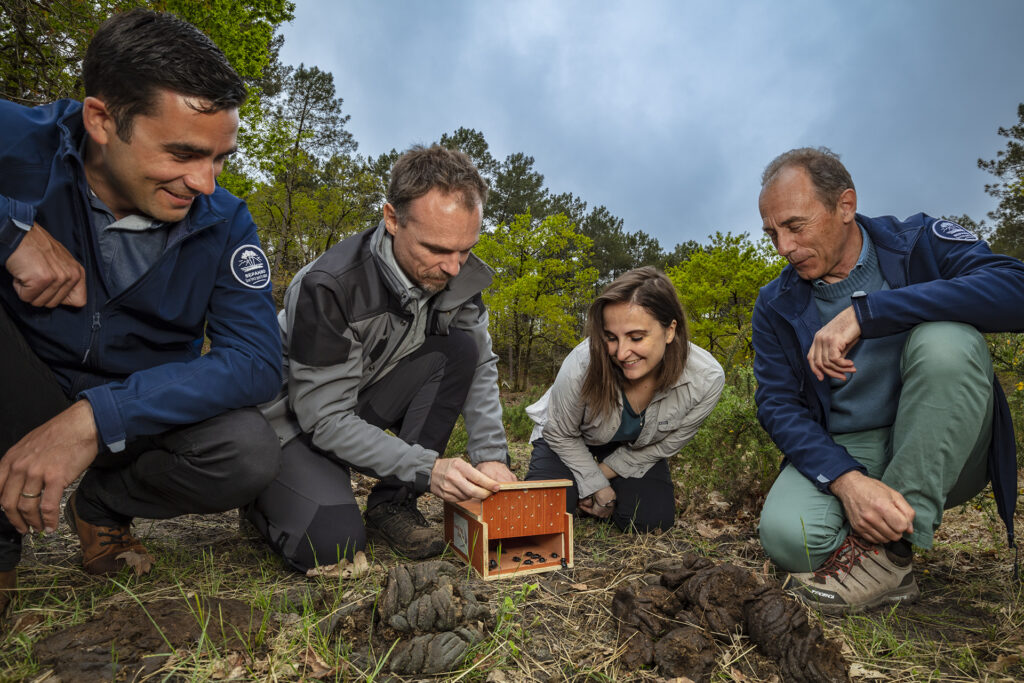
Small and great
To bring attention to this relationship, the release was staged as a “big mammal release” using miniaturized custom-made release boxes, shrunken versions of what one might see used in the release of bison or horses.
While humorous, this design choice symbolises the important role small animals have in ecosystem health and restoring functioning nature. “We often focus on large grazers in rewilding,” says Monsarrat, “but we need to recognise other, sometimes smaller animals that also play important roles in the health of ecosystems.”
